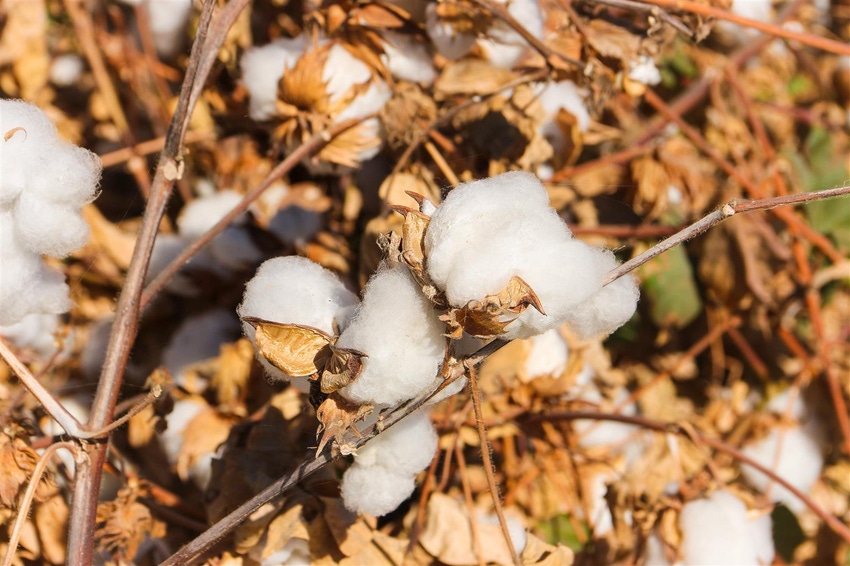April 11, 2017

California cotton growers and ginners have agreed to do whatever is necessary to produce and market only clean lint, acknowledging it would be much more costly to repair a damaged reputation caused by sticky cotton.
At a meeting in Fresno, Calif. including growers, ginners and marketers of California cotton, the consensus was “let’s do something now.” How the industry arrives at its goal will take a little more time, says Roger Isom, president of the California Cotton Ginners and Growers Association.
Maintaining the state’s reputation for producing quality cotton, namely its much sought-after extra-long staple cotton, cannot be taken for granted in global markets quick to blackball gins or entire states due to quality issues.
Isom characterized the recent meeting a success as the growers and ginners involved appeared willing to work together for the benefit of the industry.
How sticky cotton happens
Gus Schild, director of implementation with Cotton Incorporated, says there are three sources of stickiness that can impact cotton - plant sugars, insect sugars, and seed coat fragments.
Plant sugars are simple glucose sugars easily broken down and tend not to be a problem in the ginning and milling processes. Seed coat fragments and their oil deposits can be an issue in ginning, but are differentiated from the more serious insect-based sugars brought on by whiteflies and aphids.
While there are chemical controls and integrated pest management methods available to control cotton aphids and whiteflies – particularly the sweetpotato whitefly, it’s the aftereffects of each that can wreak havoc in cotton gins and leave a black stain on an entire industry.
One weak link in the chain is the ability to accurately and efficiently test for stickiness prior to ginning. For those who use roller gins which is primarily the case in California, this can be detected rather quickly as the sugars left behind by bugs will quickly shut down gin equipment, leading to costly and time-consuming clean-up.
Sticky cotton can be run through a saw gin, but for California growers seeking a premium for roller ginned Acala and the necessity to run ELS cotton through roller gins this would be a last-resort.
Most crucial, according to Marc Lewkowitz, president and chief executive officer of Supima, is the marketing of ELS cotton for higher value fine linens and apparel. Any contamination is not tolerated.
He says the focus on clean cotton should start at the grower level, including the ability to prevent pest infestations which can lead to sticky cotton.
Stopping it early
The California cotton industry has worked with University of California Cooperative Extension specialists including Pete Goodell, an integrated pest management specialist and entomologist who focuses his time on San Joaquin Valley (SJV) crops, including cotton.
Goodell suggests that the lack of funding for difficult and expensive research, and the need for research infrastructure, are just several of the challenges faced by the California cotton industry. One suggestion brought up at the meeting, which Isom says is already on his radar, is the day when the pink bollworm tax may become unnecessary to address this pest, and funding could be redirected towards financial shortfalls Goodell discusses.
Goodell also believes control methods may need to start earlier in the season. This could mean addressing whitefly populations as early as July and continuing through the critical period between defoliation and harvest.
He questions why control of the two key pests responsible for sticky cotton – the cotton aphid and sweet potato whitefly – has not been effective.
“Are we missing something or are we just not doing what we should?,” Goodell asks.
For example, long-standing Arizona guidelines for monitoring and control have been adopted by the California industry, but Goodell wonders if they are appropriate for SJV-grown Pima and Acala cottons.
Part of the battle is the challenge of getting spray applications under the cotton leaves to help kill the pests. Another concern is resistance to certain chemistries.
Justin Dutra, a pest control adviser (PCA) with Crop Protection Services, suggests growers may underestimate aphid populations and recommends treating early for better coverage throughout the canopy.
Andy Gulley, a PCA with Simplot, prefers using several chemical options in succession, starting with an early application of the insect growth regulator Diamond, followed no later than July 4 with an application of the miticide-insecticide Oberon, and a later follow-up with the insect growth regulator Courier.
Testing
Testing cotton for stickiness while it’s still baled and sitting at the gin before ginning can be achieved but it has limitations and challenges.
Those at the meeting agreed the key is preventing cotton from being impacted by pest sugars altogether.
Perceptions by many buyers of U.S. cotton suggest that prevention is vital as international buyers have long memories when it comes to sticky cotton. For example, Schild of Cotton Incorporated says Korean mills still ask about the stickiness of Arizona cotton on every U.S. visit due to bad experiences the mills had in the late 1990's.
“Cotton buyers talk to each other,” he said.
You May Also Like




